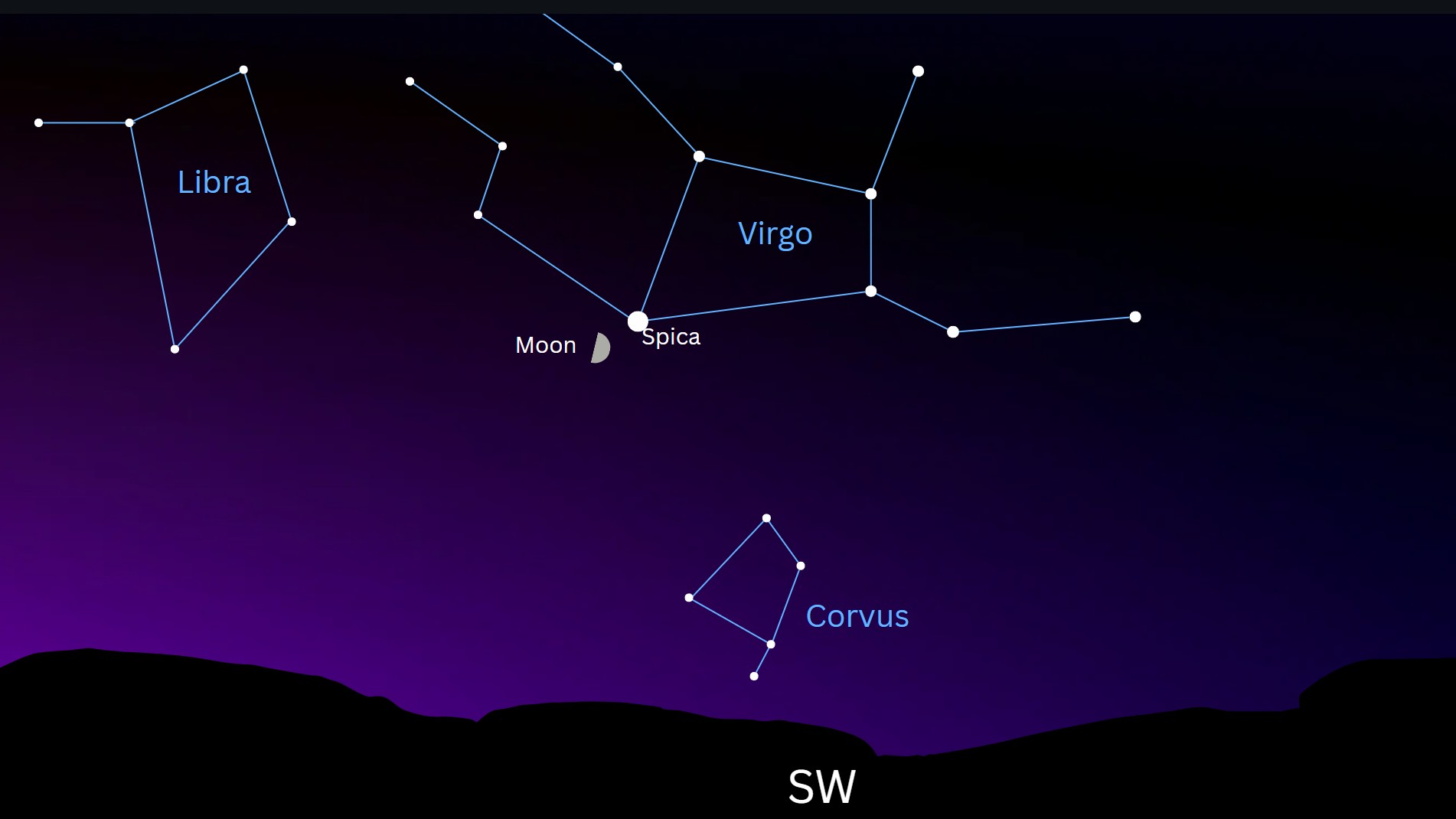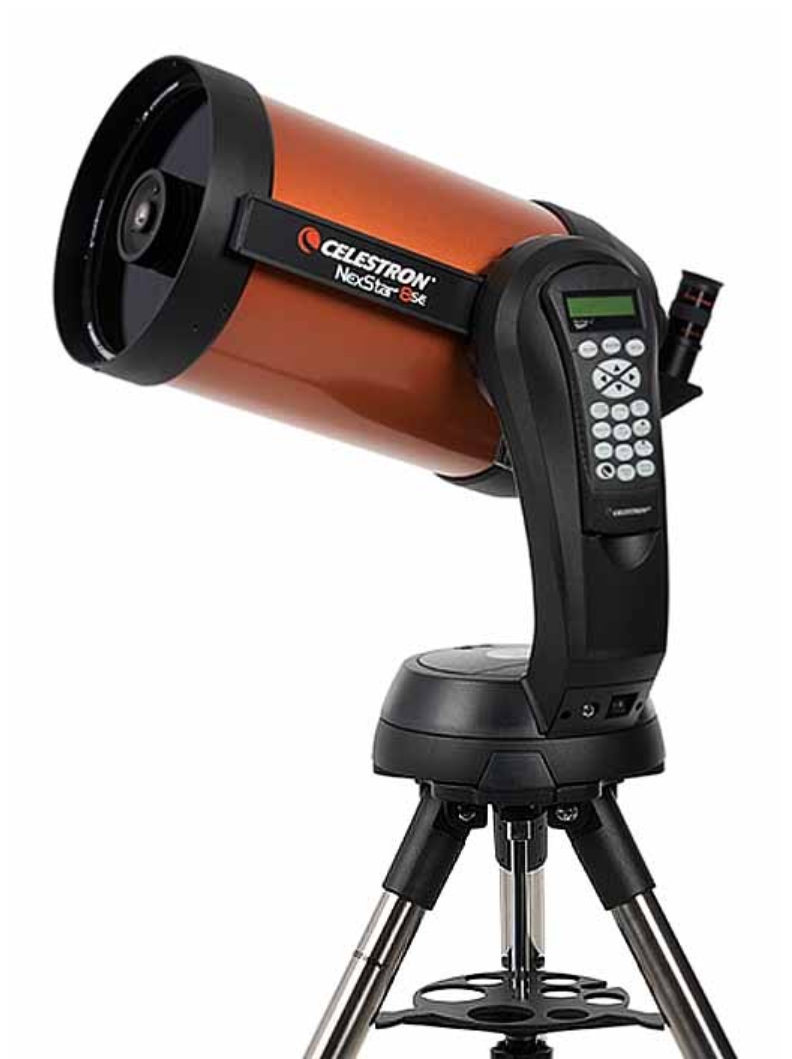
The moon will ride close to the bright star Spica above the southwestern horizon tonight (July 3) — and some well-placed viewers will see the lunar disk pass directly in front of the bright stellar body, occulting its light.
Stargazers in the U.S. will find the waxing gibbous moon above the southwestern horizon as the sun sets on July 3, with Spica — the brightest star in the constellation Virgo — visible less than 2 degrees to the upper right of the lunar disk.
Remember, you can estimate distances in the night sky using your outstretched hand. The width of your pinky finger measured at the tip accounts for roughly 1 degree in the night sky. By the time the pair set below the horizon in the early hours of July 4, the moon will have shifted to Spica's left-hand side.
At a distance of 250 light-years from Earth, Spica appears to us as a single point of light in the night sky. In reality, it is a binary star system composed of two stellar bodies multiple times the size of the sun, which together shine roughly 12,100 times brighter than our parent star.
The moon orbits our Blue Marble at an average distance of just 238,860 miles (382,500 kilometers) — close enough for its apparent position to shift by up to 2 degrees relative to the starfield beyond, depending on where you are viewing from on Earth.

Want to see Spica and the Moon? The Celestron NexStar 8SE is ideal for beginners wanting quality, reliable and quick views of celestial objects. For a more in-depth look at our Celestron NexStar 8SE review.
As such, a very small percentage of our planet's population will see the moon slide directly in front of Spica in the coming hours. This event, known as an occultation, will occur in the hours following 3:51 p.m. EDT (19:51 GMT) on July 3 and will be visible to stargazers situated in Antarctica, the Falkland Islands, and the southernmost tips of Chile and Argentina.
Editor's Note: If you capture a shot of the moon and Spica together and want to share it with Space.com's readers, then please send your photo, comments, name and location to spacephotos@space.com.







